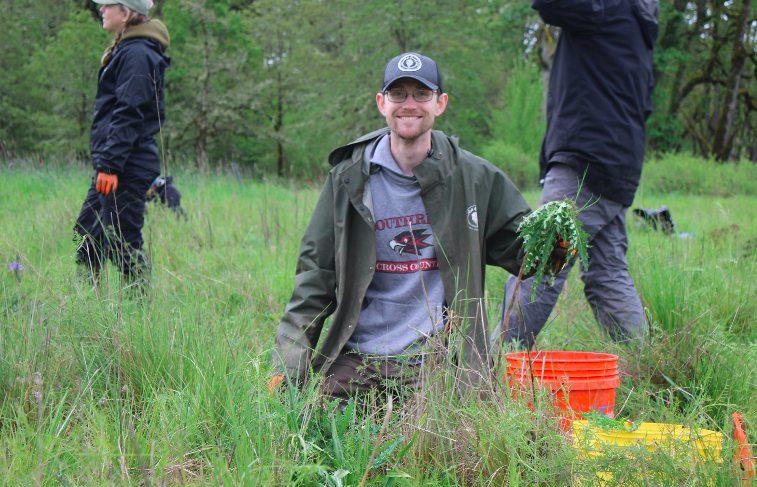
Volunteers Help Restore Native Prairie to Champoeg State Heritage Area
By Sara Alaica
June 2022
An enthusiastic group of volunteers braved the rain to join the Institute for Applied Ecology (IAE) and staff from the Confederated Tribes of Grand Ronde to restore upland prairie habitat at Champoeg State Heritage Area.
The prairie at Champoeg State Heritage Area has a long history of use by Native Americans. Because it is an open area on the banks of the Willamette River, it was both a meeting place for tribes in the area, and a stopping-off point for journeys by river. Native Americans kept the area open and free from trees with periodic burns, allowing for the harvest of many native foods, including Camas bulbs (Camassia quamash).
Colonists established a town on the prairie in 1843, restricting burning and food harvesting. The town was the site of Oregon’s first provisional government, and remains an active archaeological site. The town was washed away in a great flood in 1861.
IAE has been working with the Confederated Tribes of Grand Ronde to make the Champoeg prairie once again a place for harvesting first foods. We removed non-native species and weeds, then along with Camas, replanted edible plants such as Oregon yampah (Perideridia oregana); tapertip and narrowleaf onions (Allium sp.), cat’s ear lily (Calochortus tolmiei), and white brodiaea (Triteleia hyacinthina). Culturally important species used in ceremonies such as barestem biscuitroot (Lomatium nudicaule) were also re-introduced.
We continue to lead volunteer days with the Confederated Tribes of Grand Ronde to weed out non-native species and seed in edible plants. Would you like to help restore first foods to Champoeg State Heritage Area? Join us for our next weeding event Sunday, June 26, 2022. Sign up here.
Restoration
Research
Education
Get Involved
Contact
Main Office:
4950 SW Hout Street
Corvallis, OR 97333-9598
541-753-3099
info@appliedeco.org
Southwest Office:
1202 Parkway Dr. Suite B
Santa Fe, NM 87507
(505) 490-4910
swprogram@appliedeco.org
© 2025 Institute for Applied Ecology | Privacy Policy


